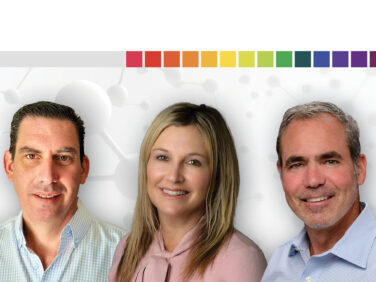Within healthcare, communication strategies are a bit like those used for weight loss: Every day we read of a new opinion and a new “breakthrough” idea on how to communicate better. In both cases the granular details are highly complex, while the core of it is a simple process: Input, output, and net gain/loss in one case; diagnosis, prescription, filled prescription, adherence, and outcome in the other. The reason why we still need to innovate is the legal, technological and cultural environment in which we operate has changed so fundamentally that old strategies are becoming less and less effective.
In almost every country, healthcare policy is a big construction site: People use new technologies to manage all aspects of their lives, including their health, and patients have become much more assertive in advocating for their own health.
This new world order for life sciences is more than just a challenge: It’s also an opportunity—an invitation to become more involved and more relevant in the lives of people who live with life changing conditions. The new paradigm, patient centricity, doesn’t just change the way our industry sells drugs; it changes how it makes them, and it changes the role we play in the healthcare community.
Intimacy Through Storytelling
The buzzword “patient centricity” has a twin that is not industry specific: “Customer intimacy.” Customer intimacy connotes closeness that suggests two-way communication, trust, loyalty and importantly, an emotional rapport. Because pharma’s “customers” consist of patients, HCPs, pharmacists and payers, the term is not quite as straightforward as in other industries.
When it comes to patients, it even smacks of a certain amount of irony—after all, we didn’t used to communicate with patients at all, and now we want to be “intimate?” However, the concept still adds value by highlighting the need to complement traditional push communication and market research with means of direct interaction between humans.
One good method of creating customer intimacy is to facilitate patient storytelling. Empirical research has shown that narrative communication has many benefits in healthcare, not least of which is fostering treatment adherence and improving patient outcomes. But patient storytelling does not need to be confined to patient-to-patient platforms. In our experience, sharing patient stories—and not just the clinical side of those—with an HCP audience or with internal corporate audiences goes a very long way in broadening narrow perceptions.
Suddenly we don’t just see a patient but a person living a real life, one aspect of which is a health problem—we don’t just see a clinical case but a human challenge. And once the story has opened our eyes for this reality, we start to develop an understanding of what role a drug maker could play in the lives of individuals affected by illness.
Intimacy Through Co-creation
This kind of customer intimacy doesn’t usually stop with letting patients share their story. Once a person invites a live audience into their lives, the audience is much more comfortable, they start asking questions and an honest and open face-to-face dialog ensues. When done right, this dialog can turn into an advisory board that provides concrete guidance on how a pharma company can improve products and services but also on how to be a trusted partner along the patient journey.
When life sciences companies interact directly with Patient Ambassadors, a unique opportunity arises to co-create content that adds real business value internally and externally—on all channels. Real patients are better ambassadors on branded websites than models. Real patients are better ambassadors in DTC ads than actors. Real patients, at the end of the day, are the best ambassadors to represent a healthcare company.
Forming Advocacy Alliances
In many cases, patient-centric companies find advocacy organizations to be an important ally in improving the lives of those affected by disease. Nonprofit organizations have become an integral part of the healthcare fabric, and they’re as diverse and competitive with one another as businesses are. NGOs are so important because they address needs in the patient community that corporations, providers and governments haven’t filled.
For cooperation between commercial entities and nonprofits to succeed, the goals of the two organizations must not only be aligned, but they should also not compete. It’s all about making things happen that either organization could not make happen without the other. Each partner brings their unique resources to the table: Credibility in the patient space vs. scientific competency and a substantive patient network vs. efficient management structures.
Forming alliances with advocacy organizations is not just a philanthropic exercise. There is a growing need for broad alliances between patients and their advocacy organizations, life sciences companies, HCPs and pharmacists to ensure that treatment decisions are again made in the doctor’s office, based on clinical need, and not dictated by payer formularies. We will certainly see this struggle become more and more relevant in the very near future.
Social Media’s Role
Real communication and true customer intimacy require a two-way dialogue—an exchange. Think about the relationships in your personal life. There really is no substitute for a face-to-face, live exchange. But despite best efforts, we don’t always have the opportunity to speak with our customers directly.
That’s one way to look at social media: A technology-driven opportunity to have a two-way dialogue with your customers—patients, caregivers, HCPs and even payers. Social media gives pharmaceutical marketers a doorway into conversations at a depth and scale never before possible.
Social media allows us to ask questions, to gauge interest and gain a deeper understanding of customers’ needs. It enables us to be in the places and spaces where customers are naturally already looking for answers and information. It gives a company the chance to show its human side. After all, how can one be intimate without being human?
From the customers’ perspective, socially-enabled conversations can make it easier for them to get what they need quickly. And done well, social media communities, even if sponsored by pharma, can create critical peer-to-peer support networks for patients where before there were none.
No matter the platform, social media inherently creates a two-way dialogue with customers. For some, even just listening is a great first step towards the goal of true customer intimacy.
Mobile Intimacy—Every Step of The Way
It’s impossible to mention the customer-centric merits of social media without also addressing the same within the mobile channel: The two are inextricably linked. According to ComScore, 60% of all time spent online in 2014 was via a mobile device, 70% of social networking happens within the mobile space, and the number one mobile property in the world is Facebook. The link is clear. If your programs aren’t mobile-friendly, they are not social-friendly and vice-versa. If your programs are not mobile or social at all, they just are not customer friendly. Period.
Beyond the link between social and mobile is the critical connection between customer intimacy and the mobile user experience. Customers today use mobile everywhere in every way. They expect the companies and brands with which they do business to be mobile-friendly.
Having a mobile presence is not enough—it must go beyond mere presence to be a user-centric experience in every way. This requires a deep understanding of the wants, needs and behaviors of patients, which cannot be accomplished without their direct input.
Go Beyond Just ROI
Don’t limit your thinking of the mobile channel to building a simple tracker app—plenty of those already exist. Whether your offering comes in the form of a responsive website, mobile-friendly emails, mobile video, mobile ads, SMS text reminders, or an app that fills a critical gap, mobile is about being where your customers are for both the benefit of your customers and secondarily your brands’ communications needs. Don’t take for granted the intimate opportunity you have to be in your customers’ pocket, purse or lab coat. Earn that opportunity and make it worth their while.
The life sciences industry is in an excellent position to develop relationships with external actors to make a positive impact on healthcare outcomes through customer intimacy. The customer intimacy toolbox is filled to the brim: Patient storytelling, co-creation, advocacy relations, social media and mobile offer more than just ROI. They ensure that healthcare businesses continue to do what they do best: Provide the products, services and information needed for people to live their lives to the fullest, even if they live with a serious health condition.






